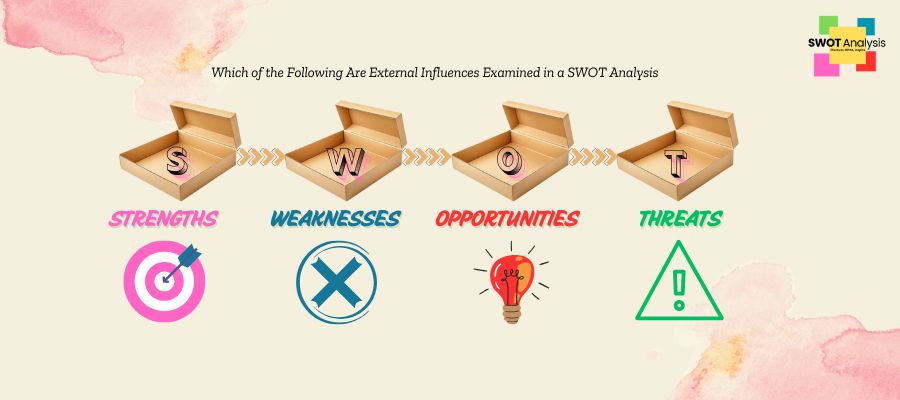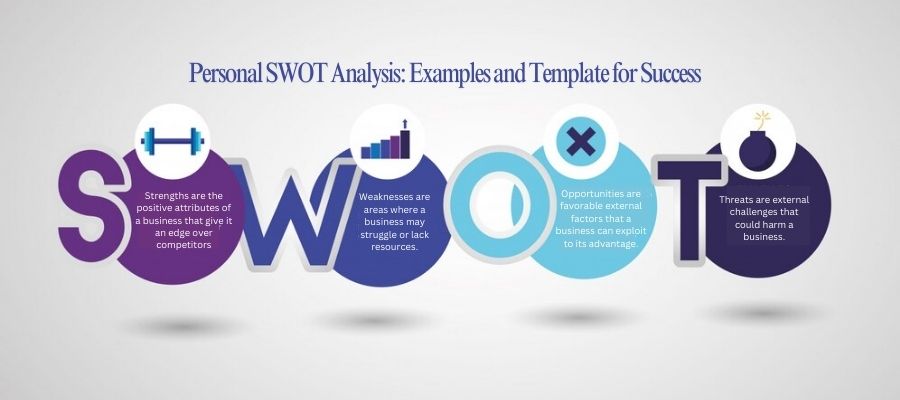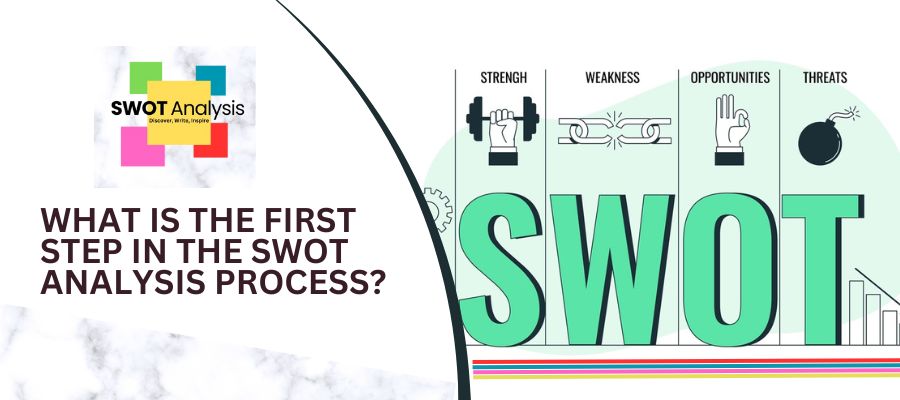SWOT Analysis is a strategic planning technique used to evaluate a company’s Strengths, Weaknesses, Opportunities, and Threats. It is a structured method that helps businesses assess their current position in the market and develop informed strategies for growth. By identifying both internal and external factors affecting a business, SWOT analysis can help in making data-driven decisions that improve business performance.
Overview of Its Significance in Competitive Analysis
A SWOT analysis plays a crucial role in competitive analysis, allowing businesses to benchmark their strengths and weaknesses against their competitors. Understanding these factors enables companies to develop a robust business strategy and gain a competitive edge. By analysing market trends and consumer preferences, businesses can adapt to industry changes and stay ahead of their rivals.
Why Is It Important to Conduct a SWOT Analysis on a Key Competitor?
A. Identifying Competitive Advantages and Areas for Improvement
Conducting a SWOT analysis on a competitor helps businesses pinpoint their own competitive advantages and areas requiring improvement. By evaluating a competitor’s strengths, companies can determine what sets them apart in the industry. Similarly, understanding a competitor’s weaknesses presents opportunities for differentiation and enhancement of services or products.
B. Gaining Insights into Market Trends and Consumer Behaviour
A competitor SWOT analysis provides valuable insights into market trends and consumer behaviour. Businesses can observe how competitors respond to shifts in consumer demands and industry changes. By doing so, they can tailor their own strategies to meet evolving customer needs and improve their business offerings.
C. Informing Decision-Making and Strategic Initiatives
A well-conducted SWOT analysis aids in strategic planning by equipping businesses with essential data for decision-making. It helps identify potential risks and opportunities that you could consider for expansion. Businesses can use a SWOT analysis to refine marketing strategies, optimise operational processes, and strengthen their market position.
Also Read: Which of the following is a Drawback of the SWOT Analysis?
How SWOT Analysis Can Help Improve Your Business Strategy
A detailed SWOT analysis provides businesses with a comprehensive overview of their current standing in the industry. By leveraging insights from a competitor analysis, companies can:
- Enhance product offerings by learning from competitors’ strengths and weaknesses.
- Improve customer experience through refined marketing and service strategies.
- Identify new revenue streams by exploring gaps in the market.
- Mitigate risks by preparing for potential threats identified in the analysis.
- Optimise marketing campaigns based on successful competitor strategies.
Integrating SWOT Analysis into Business Strategy
Aligning SWOT Insights with Business Goals
To make the most of a SWOT analysis, it’s important to connect its findings with your business goals. Here are some steps to follow:
- Identify key insights from your SWOT analysis.
- Align these insights with your overall business objectives.
- Create specific action plans based on this alignment.
Prioritizing Strategic Initiatives
Once you have aligned your SWOT insights with your goals, it’s time to prioritize. Consider the following:
- Focus on strengths that can be leveraged for growth.
- Address weaknesses that could hinder progress.
- Explore opportunities that align with your business vision.
- Prepare for threats that could impact your success.
Allocating Resources Effectively
Effective resource allocation is crucial for implementing your strategy. Here’s how to do it:
- Assess your current resources and capabilities.
- Allocate resources to initiatives that have the highest potential impact.
- Monitor and adjust resource allocation as needed to stay aligned with your goals.
Tools and Techniques for Effective Competitor SWOT Analysis
Utilizing Digital Tools for Data Collection
To conduct a thorough competitor SWOT analysis, it’s essential to use the right tools. Here are some popular options:
- SEMRush: This tool helps you see your competitors’ online presence, including their keywords and advertising strategies.
- Ahrefs: Great for checking competitors’ backlinks and understanding their top-performing content.
- Similarweb: Offers insights into website traffic and audience demographics.
Analyzing Competitor Online Presence
Understanding how competitors present themselves online is crucial. Here are steps to analyze their online presence:
- Review their website: Look at design, content, and user experience.
- Check social media: Observe their engagement and follower interactions.
- Evaluate customer reviews: See what customers are saying about their products or services.
Implementing SWOT Analysis Frameworks
Using a structured approach can enhance your analysis. Consider these frameworks:
- TOWS Matrix: Helps in linking internal strengths and weaknesses with external opportunities and threats.
- SWOT Grid: A simple table to organize findings.
Practical Applications of SWOT Analysis
A. Case Studies of Successful Companies Utilizing SWOT Analysis
Several leading companies have successfully employed SWOT analysis to outperform competitors. For example:
- Apple Inc. has used SWOT analysis to capitalise on its innovative strengths while addressing weaknesses such as high product costs.
- Coca-Cola consistently assesses its global market presence and competition to maintain its dominance in the beverage industry.
- Amazon leverages SWOT analysis to stay ahead in e-commerce by identifying emerging opportunities and threats.
B. Steps to Effectively Conduct a SWOT Analysis on a Competitor
To conduct a competitor SWOT analysis, follow these steps:
- Identify the Competitor – Choose a key competitor to analyse based on market relevance.
- Gather Data – Research the competitor’s products, services, marketing strategies, and customer feedback.
- Assess Strengths and Weaknesses – Determine what the competitor excels at and where they lack.
- Identify Opportunities and Threats – Look at industry trends, technological advancements, and economic factors that could impact the competitor.
- Compare Findings – Benchmark the competitor’s SWOT analysis with your own to refine strategies.
C. Tools and Resources Available for Conducting SWOT Analysis
Several tools can assist in conducting a thorough SWOT analysis, including:
- Google Trends – Helps track market trends and consumer interest.
- SEMrush – Provides competitor analysis insights for digital marketing.
- SWOT Analysis Templates – Available in platforms like HubSpot and SmartDraw.
- Market Research Reports – Industry-specific reports help in data collection and analysis.
- Social Media Listening Tools – Platforms like Hootsuite help track competitor engagement and customer sentiment.
Conclusion
A SWOT analysis is a valuable tool for assessing competitors and refining business strategies. By identifying strengths, weaknesses, opportunities, and threats, businesses can conduct a SWOT analysis that enhances their market positioning. Competitive analysis helps in staying ahead in the industry by offering valuable insights for strategic planning. Implementing findings from a SWOT analysis can lead to cost savings, increased profitability, and long-term business success.
FAQs
1. What is a SWOT analysis of key competitors?
A SWOT analysis of key competitors involves evaluating their Strengths, Weaknesses, Opportunities, and Threats to gain insights that can help improve your business strategy.
2. Why is it important for companies to perform a SWOT analysis?
Performing a SWOT analysis allows businesses to identify market trends, competitor strategies, and areas for improvement, enabling them to stay competitive.
3. Are there any particular marketing trends that will benefit your competitor?
Yes, emerging trends like personalised marketing, AI-driven analytics, and sustainability-focused branding can benefit competitors. Understanding these trends can help businesses stay relevant.
4. Are there new market opportunities that you could consider?
Yes, companies can explore opportunities in untapped markets, digital transformation, and expanding product lines to gain a competitive advantage.
5. Can a competitor analysis provide cost savings?
Yes, by analysing competitors’ strategies, businesses can identify cost-effective marketing tactics, operational efficiencies, and budget-friendly solutions to enhance profitability.
By conducting a SWOT analysis, businesses can refine their strategies and use a SWOT framework to navigate industry challenges effectively.





